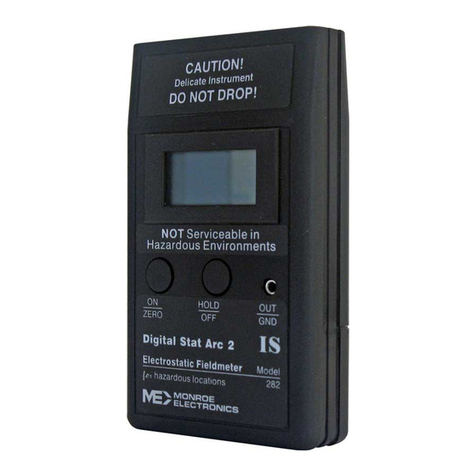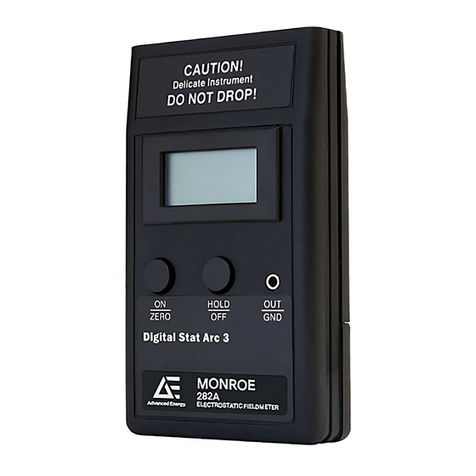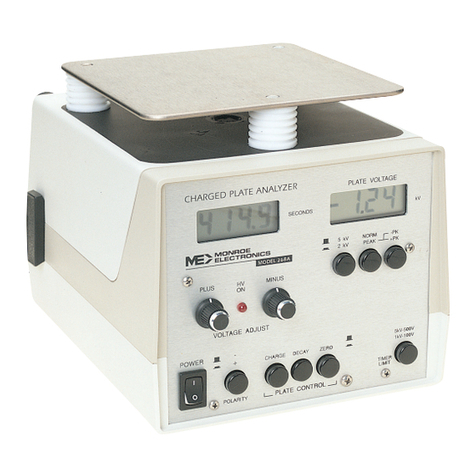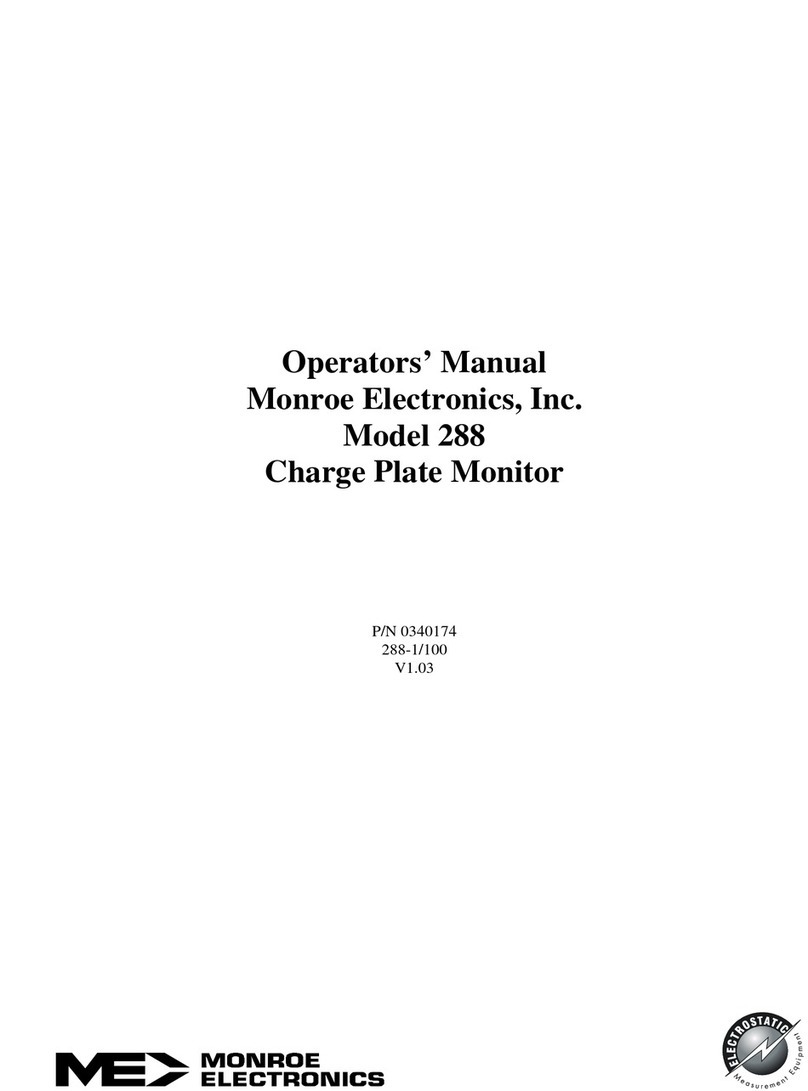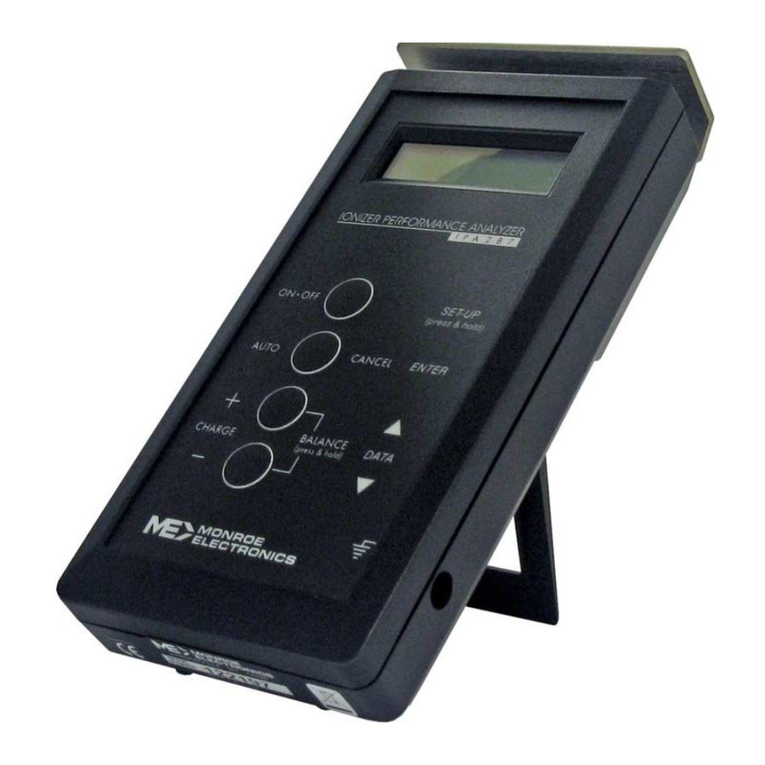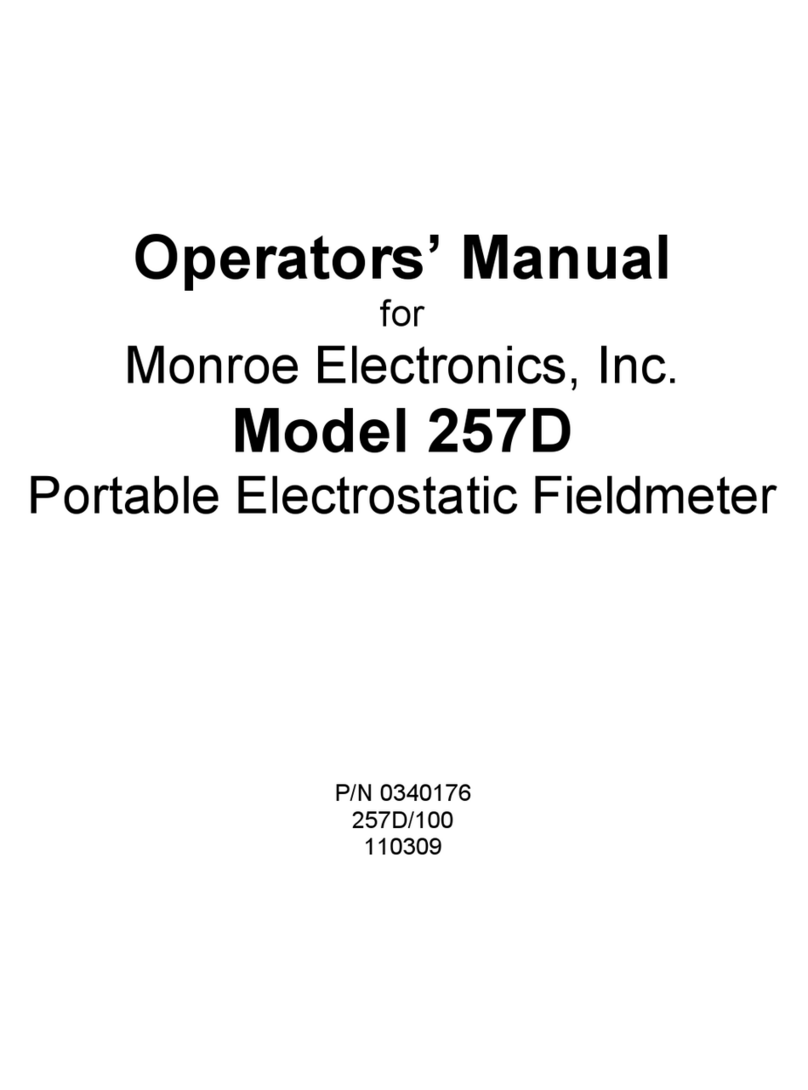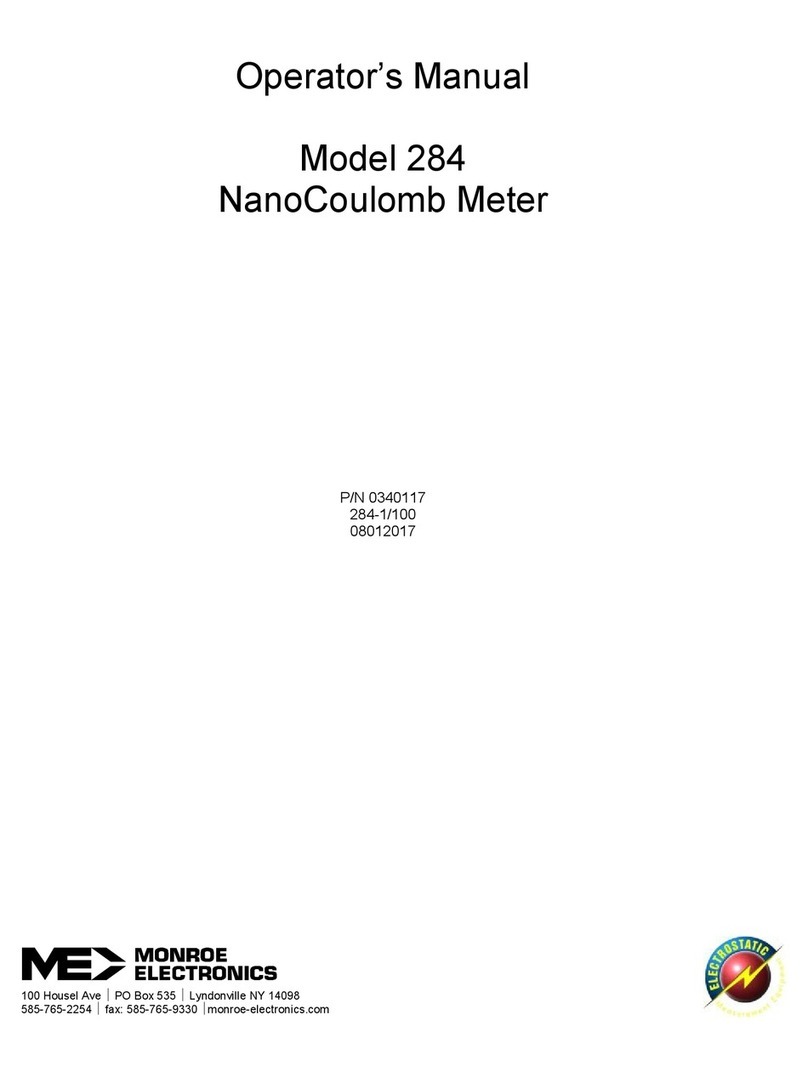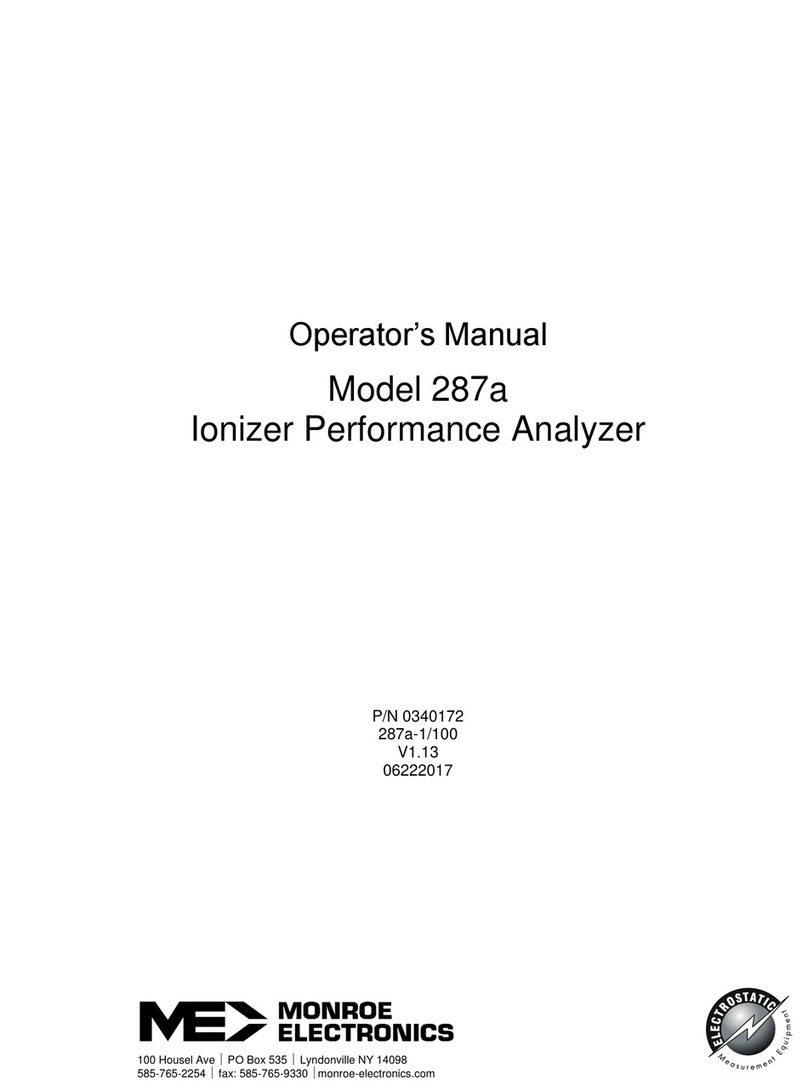
ii
PRODUCT WARRANTY
Monroe Electronics, Inc., warrants to the Owners, this instrument to be free from defects in material and
workmanship for a period of two years after shipment from the factory. This warranty is applicable to the original
purchaser only.
Liability under this warranty is limited to service, adjustment or replacement of defective parts (other than tubes,
fuses or batteries) on any instrument or sub-assembly returned to the factory for this purpose, transportation
prepaid.
This warranty does not apply to instruments or sub-assemblies subjected to abuse, abnormal operating conditions,
or unauthorized repair or modification.
Since Monroe Electronics, Inc. has no control over conditions of use, no warranty is made or implied as to the
suitability of our product for the customer’s intended use.
THIS WARRANTY SET FORTH IN THIS ARTICLE IS EXCLUSIVE AND IN LIEU OF ALL OTHER WARRANTIES
AND REPRESENTATIONS, EXPRESS, IMPLIED OR STATUTORY INCLUDING BUT NOT LIMITED TO THE
IMPLIED WARRANTIES OF MERCHANTABILITY AND FITNESS. Except for obligations expressly undertaken by
Monroe Electronics, in this Warranty, Owner hereby waives and releases all rights, claims and remedies with
respect to any and all guarantees, express, implied, or statutory (including without limitation, the implied warranties
of merchantability and fitness), and including but without being limited to any obligation of Monroe Electronics with
respect to incidental or consequential damages, or damages for loss of use. No agreement or understanding
varying or extending the warranty will be binding upon Monroe Electronics unless in writing signed by a duly
authorized representative of Monroe Electronics.
In the event of a breach of the foregoing warranty, the liability of Monroe Electronics shall be limited to repairing or
replacing the non-conforming goods and/or defective work, and in accordance with the foregoing, Monroe
Electronics shall not be liable for any other damages, either direct or consequential.
RETURN POLICIES AND PROCEDURES FACTORY REPAIR
Return authorization is required for factory repair work. Material being returned to the factory for repair must have a
Return Material Authorization number. To obtain an RMA number, call 585-765-2254 and ask for Customer
Service.
Material returned to the factory for warranty repair should be accompanied by a copy of a dated invoice or bill of
sale, which serves as a proof of purchase for the material. Serial numbers and date codes on our products also
serve to determine warranty status. Removal of these labels or tags may result in voiding a product’s warranty.
Repairs will be returned promptly. Repairs are normally returned to the customer by UPS within 10 to 15 working
days after receipt by Monroe Electronics, Inc. Return (to the customer) UPS charges will be paid by Monroe
Electronics on warranty work. Return (to the customer) UPS charges will be prepaid and added to invoice for out-
of-warranty repair work.
RETURN OF REPAIRED ITEMS:
Factory repairs will be returned to the customer by the customer’s choice of FedEx, DHL or UPS. Warranty repairs
will be returned via UPS ground. The customer may request accelerated shipping via the previous mentioned
carriers for both warranty and non-warranty repairs. NOTE: Accelerated transportation expenses for all factory
repairs will always be at the expense of the customer despite the warranty status of the equipment.
FACTORY REPAIRS TO MODIFIED EQUIPMENT:
Material returned to the factory for repair that has been modified will not be tested unless the nature and purpose of
the modification is understood by us and does not render the equipment untestable at our repair facility. We will
reserve the right to deny service to any modified equipment returned to the factory for repair regardless of the
warranty status of the equipment.
